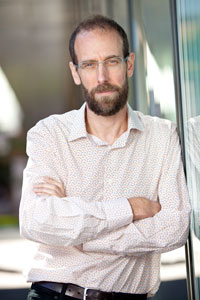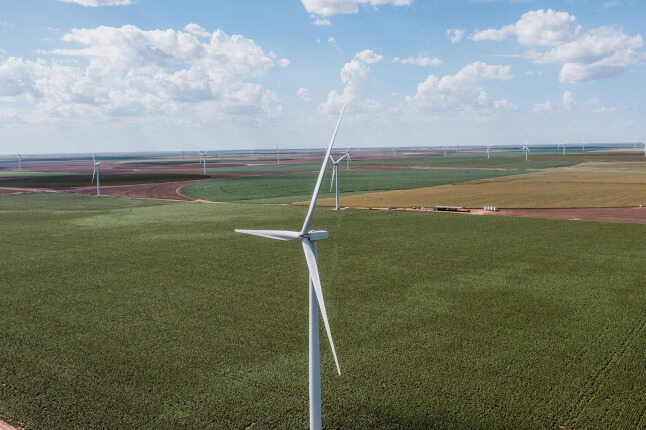News
Researchers launched a new project to explore how particulate matter interacts with the Earth’s upper atmosphere
Harvard University researchers have launched a new project, the Stratospheric Controlled Perturbation Experiment (SCoPEx), to explore precisely how particulate matter interacts with the Earth’s upper atmosphere. What they learn will help clarify some of the possible risks and benefits of solar geoengineering, which could potentially offset some of the effects of climate change and complement efforts to reduce CO2 emissions. The experiment will be guided by an independent committee of distinguished scientists and policy experts.
“Climate change is such a serious challenge that we need to consider everything in our arsenal to combat it: emissions reduction, carbon dioxide removal, adaptation, and possibly solar geoengineering,” said Frank Keutsch, Stonington Professor of Engineering and Atmospheric Science and Professor of Chemistry and Chemical Biology at Harvard. “But solar geoengineering could not address the root cause of climate change – the accumulation of greenhouse gases.”
There is strong consensus among scientists, including those working on SCoPEx, on the urgent need to reduce greenhouse gas emissions. Substantial efforts also need to be dedicated to accelerating the development of carbon dioxide removal technologies. At the same time, it is important for scientists and engineers to learn whether it is possible to reduce some of the more severe effects of climate change, such as extreme temperatures, changes in water availability, and the intensity of tropical storms, through approaches like solar geoengineering. Right now, there are too many uncertainties and risks that need to be better understood.
Solar geoengineering is an idea that dates back to the 1950s. A stratospheric solar geoengineering approach would release a controlled volume of particles into the Earth’s stratosphere, the upper atmosphere. These particles would then reflect a very small fraction of sunlight back into space. Scientists must assess the risks associated with these particles and compare their findings to the risks of climate change. To obtain an accurate picture of how the stratosphere and climate system would respond, scientists need first-hand, outdoor observations.
“Solar geoengineering might look attractive, but it comes with its own set of risks and quite a lot of uncertainty,” said Keutsch. “We have to test our assumptions. For example, depending on what particles are used, solar geoengineering could impact the ozone layer, or even shift stratospheric dynamics in a negative way.”
The SCoPEx Experiment
Harvard’s proposed, small-scale, outdoor research experiment aims to clarify uncertainties about aerosol, chemistry, and mixing processes in the stratosphere. SCoPEx, led by Keutsch, is designed to obtain quantitative measurements of aerosol microphysics, stratospheric mixing processes, and atmospheric chemistry. These measurements are needed to verify and improve the estimates of risks and benefits of solar geoengineering that are produced by current atmospheric models.
SCoPEx project members will address questions about how particles interact with one another, with the background stratospheric air, and with solar and infrared radiation. Collecting high-resolution wind measurements will provide diagnostic signatures of turbulence, turbulence dissipation, and mixing. The goal is to establish a robust understanding of these processes across the scientific community, and to use that knowledge to inform discussions about the feasibility and physical risks of potential solar geoengineering approaches.
“Computer modeling and laboratory work can tell us some very useful things about solar geoengineering, but all models ultimately rest on observations of the real environment. If anything, I’m concerned that the current climate models make solar geoengineering look too good,” explained Keutsch. “If we want to be able to predict how large-scale geoengineering would disrupt the ozone layer, or the exchange of air between the troposphere and stratosphere, we need more real-world observations. This experiment will help us understand how small-scale turbulence might set the upper limit on rates of stratospheric mixing, which is a large unknown in current stratospheric science.”
How it works
At the heart of SCoPEx is a scientific balloon, fitted with propellers.
- This high-altitude balloon would lift an instrument package approximately 20 kilometers (12 miles) into the atmosphere.
- Once in place, a very small amount (100 grams to 2 kilograms) of material would be released into an air mass mixed by the propellers, roughly one kilometer long and one hundred meters in diameter.
- The same balloon would then measure resulting changes in the perturbed air mass, including changes in aerosol density, atmospheric chemistry, and light scattering.
- Instrumentation carried on the balloon would also measure wind, which could allow inference of atmospheric turbulence for testing hypotheses about how stratospheric turbulence is generated.
Safety First
According to Keutsch, the experiment itself is so small in scope that it will not pose significant hazard to people or the environment.
- The proposed particle to be released is calcium carbonate, which is a non-toxic substance commonly found in nature, for example as limestone.
- SCoPEx proposes using sub-micron precipitated calcium carbonate particles, which are a common additive to consumer products and one of the main constituents of wind-blown mineral dust.
- Less than two kilograms of material would be released, which is very small compared to material routinely released into the stratosphere by aircraft, rockets, and balloon flights.
- Material from SCoPEx that reaches the surface would be diluted to the point that it would not be detectable against the background atmospheric mineral dust burden for continental air.
SCoPEx Advisory Committee
There are complex societal and governance issues surrounding solar geoengineering, so Harvard has ensured the SCoPEx project has the guidance of an independent Advisory Committee. To select the membership, Harvard followed external advice provided by an independent search committee.
Richard McCullough, Harvard Vice Provost for Research, said, “This work fits with Harvard’s mission to explore the physical world in ways that benefit humankind. Basic research on solar geoengineering is critical, and it is essential that we serve as an exemplar of research governance in this emerging field. An independent Advisory Committee, combined with the experience and leadership of the SCoPEx project members, will help us achieve this goal. We are grateful to all those who have contributed to this effort.”
Chaired by Louise Bedsworth, Executive Director of California’s Strategic Growth Council, the Advisory Committee will provide the university and SCoPEx scientists with advice on environmental health and safety, research, and governance. It will address scientific review, standards for transparency, risk management, and stakeholder engagement, among other aspects. The committee will also ensure that SCoPEx scientists share their findings and “governance lessons learned” with diverse stakeholders, including other scientists and policymakers.
Advisory Committee Members Confirmed as of July 2019
- Louise Bedsworth, Executive Director, California Strategic Growth Council (Chair)
- Kevin Knobloch, former Chief of Staff, U.S. Department of Energy (Vice Chair)
- Michael Gerrard, Andrew Sabin Professor of Professional Practice, Columbia Law School
- Michael Kleeman, Visiting Scholar, University of California San Diego and Senior Fellow, UC Institute on Global Conflict and Cooperation
- Robert Lempert, Principal Researcher, RAND Corporation and Director, Frederick S. Pardee Center for Longer Range Global Policy and the Future Human Condition
- Katharine Mach, Senior Research Scientist, Stanford University Earth System Science and Director, Stanford Environment Assessment Facility
- Raj Pandya, Director, Thriving Earth Exchange, American Geophysical Union
- Shuchi Talati, Geoengineering Research, Governance, and Public Engagement Fellow, Union of Concerned Scientists
Further information
About the Harvard Solar Geoengineering Research Program
Harvard’s Solar Geoengineering Research Program (SGRP) is part of the Harvard University Center for the Environment. SGRP aims to further critical research on both the science and governance of solar geoengineering. https://geoengineering.environment.harvard.edu/
SCoPEx Project and Governance
To read a statement from Louise Bedsworth, visit the SCoPEx Advisory Committee site
To learn more about the SCoPEx project governance, visit the SCoPEx governance site
For additional information about the SCoPEx project, including scientific details and funding, visit the project website
For background on solar geoengineering, including the latest research findings, visit SGRP’s publications page
You can also refer to this technology fact sheet on solar geoengineering published by Harvard’s Belfer Center
Topics: Climate, Geoengineering
Cutting-edge science delivered direct to your inbox.
Join the Harvard SEAS mailing list.
Scientist Profiles
David Keith
Associate in Environmental Science and Engineering
Press Contact
Paul Karoff




